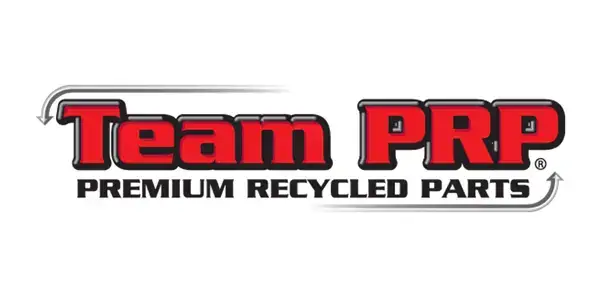How to Replace Brake Pads [DIY Guide]
Do you need to replace brake pads on your vehicle? You want to always be certain that your brakes are in good condition since they’re critical to your safety. Replacing your brake pads as often as needed is a priority. If you can hear your brakes screeching as you’re driving then it’s a strong indicator that it’s time for you to start thinking about getting some brake work done.
When it comes to your car, it’s going to cost you a lot in maintenance over the years so if you learn to do a few of the easier jobs yourself then you can save some extra cash. You’d be surprised at, with a little bit of research and the right resources, how easy it is to do the job yourself and you can save money.
If you’re looking to save on your brake replacement costs then changing your pads and rotors is a great way to get started. If you’re thinking about replacing your brake pads yourself but are hesitant cause you’re not sure how to get started, this guide can help you. It may seem like a lot of work, but often changing your brake pads will only take around four hours and it’ll save you money at the shop both now and when maintenance needs to be done again.
If you want to get started but are not sure how then check out this guide below that we’ve compiled to show you exactly what you need to get started with replacing brake pads. Follow these steps and you’ll not only feel proud and accomplished but you’ll also have saved yourself money and gained experience!
What You Need
Before you’re ready to jump into the job ahead you must make sure you’re fully prepared. You want to make sure that you have all the tools that you need before you get started. For the most part, these will probably be tools that you’ll have around your house but some of the items may require you to take a quick trip to the store. Although things may seem expensive, it’s important to remember that you’ll have them forever and can use these tools repeatedly. Here’s what you’ll want to make sure you have on hand before you get started with replacing your brake pads.
Owner’s Manual
Not only for replacing brake pads but truly when you’re doing any repairs on your car you want to make sure that you have the owner’s manual right next to you. Even if you’ve owned your car for a while and assume that you know everything about it, you still want to make sure that you’re prepared with the owner’s manual. The owner’s manual will help you to find certain points in your car and information that you might need for the job ahead.
New Brake Pads
Of course, you’re going to need new brake pads that you’ll use to replace the old ones. These will be fairly easy to find since your local auto parts store will probably carry them and, if not, you can always check online and order them before starting. Whatever way you opt to get them, the important thing is that you simply have the new brake pads sitting beside you before you get started with the work.
Brake Grease
You’re also going to want to make sure that you’re prepared by having brake grease on hand. This will be used by applying it to the surface of the brake pads between the pads and the calipers. You’ll typically be able to get this at any of your local auto stores or you may even have some on hand in your garage.
Floor Jack
The jack that you already have with your car might be okay for the typical maintenance and when you need a tire changed, but when you’re doing more serious work you’re going to want a floor jack. If you don’t already have a floor jack then head out and buy one because it’ll be needed for future maintenance on your car as well.
How To Replace Brake Pads
Now that you’ve bought the tools required and you have everything you need, it’s time to get started with actually replacing your brake pads. Remember that it’s okay to be hesitant at first and even if you’re nervous, it’s an investment and once you have this knowledge it’ll be with you for life. It may take a little while to learn but once you do, you can easily change your brakes inside your garage in just a few hours. Here are the steps that you want to follow to replace your brake pads.
Step One: Remove The Caliper and Brake Pads
Once you make sure that your car is off the ground, you want to remove the tires. The vehicle must be sitting on a solid service since the next part is that you’ll place the jack’s stand underneath your vehicle. Once your car is sitting safely on the jack stands it’s time to start with removing the caliper and the old brake pads from your vehicle. Use a socket wrench to remove the bolts that are located on the back of the caliper assembly and slide the caliper off the rotor. Set the caliper on top of the caliper bracket.
At this point, you’ll be able to remove the brake pads from the rotor and they’ll either pop or slide out. Start removing the pads slowly and take mental notes of how they’re positioned in the brake assembly so that when you insert the new ones it’s easier to make sure they’re inserted correctly. Make sure that you’re extra careful not to cause any damage to the rotor or clips when you’re removing the old brake pads. Take your time and examine everything so you make sure it’s getting done correctly.
Step Two: Install New Brake Pads
Now that you’ve removed the old brake pads you’re able to start putting in the new ones. Start the process by applying your brake grease to the backs of the pads, being careful not to let the grease get on the front of the rotors or brake pads. Once you’ve made sure that the brake grease is applied to the backs of the pads you can place your new brake pads in the spot where you removed the old brake pads. Take things slowly and if it’s your first time then replace one brake pad at a time and closely look at where every part goes.
Step Three: Replace The Brake Caliper Assembly
Now that you have the new brake pads installed properly it’s time to replace your caliper assembly. Commonly, the caliper assembly will no longer fit on the brake pads and if this is the case then you can fix it rather easily. You can use a brake tool to fix this and make sure that the caliper fits properly. The reason that it typically doesn’t fit is that as the brake pads are wearing down the piston inside the caliper will start to adjust to a smaller width. It won’t take long to correct it with the brake tool and it’ll get easier every time you do it.
Step Four: Finish Up
Do a thorough check to make sure that everything looks good and is secure before you put your tires back on. Once your tires are securely on and the car is on the ground, double-check to make sure that your lug nuts are secure and tightened. It can be easy to rush putting the tires on after replacing the brake pads, but you don’t want to risk your tires falling off or being shaky while you’re driving. Once your tires are on securely, take your car for a ride around the block and test out the brakes. Make sure that everything sounds and feels good and if not, you may need to look at your car again and make sure it’s all tightened.



